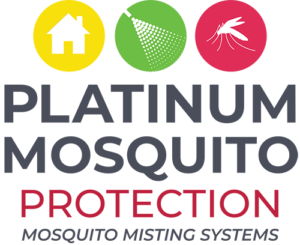
Researchers hope one fierce little crustacean can provide the answer
In our modern, eco-conscious era, is there an effective alternative to mosquito population control than traditional, chemical-based solutions? Researchers at the University of Maryland Center for Environmental Science think a tiny creature similar to a shrimp may hold the answer. These crustaceans, known as copepods, have a taste for mosquito larvae and may prove particularly valuable in this epic battle.
The year in mosquitos
In much of the U.S. this spring and summer, it’s been a great year to be a mosquito. The same unusually-intense spring rains that brought shimmering green fields and bright flowers across much of the East Coast and mid-Atlantic also served up a bumper crop of mosquitos, at nearly two to three times their typical levels. Higher rates of precipitation lead to an increase in standing water, which is a prime breeding real estate for mosquito eggs and larvae.
For example, this May, Florida “shattered a century-old (plus) May rainfall record set in 1895 with 9.23 inches of precipitation. At Miami International Airport, where Miami’s tally is officially totaled, gauges measured the fourth wettest May ever with 16.59 inches, said Florida State University State Climatologist David Zierden.”
This rainfall coincides with a decade-long increase in insect-borne illnesses, which have more than tripled since 2004, and are largely caused by mosquitos, ticks, and fleas. These include West Nile, Zika, Lyme, and most recently the Heartland Virus, most of which have no vaccine or treatment. The only prevention is pest control.
Enter the copepod
With as many as 15,000 species, copepods are common to most waterways and are essential to healthy ecosystems. These tiny crustaceans (only a couple of millimeters in length and practically invisible to the human eye) feed on algae and plankton, and in some cases, mosquito larvae. The species used in mosquito control are known collectively as cyclopoid copepods. They are the natural enemies of what is known as the first and second instar, the earliest stages of larvae development. They live on a varied diet and will, therefore, hang around waterways, feasting on other critters while they wait for their next mosquito meal.
Known as fairly aggressive predators, copepods are known to graze, often not stopping to consume their prey even after killing it. This method can yield up to 40 mosquito larvae a day. The ability to harness this potential may prove extremely valuable to local outdoor industries, tourism, and the prevention of diseases such as Zika and West Nile.
The University of Maryland researchers collected female Culex mosquitos (the central culprits in the spread of West Nile) and Asian tiger mosquitos (a particularly nasty variety that hunts in the daytime and lays eggs practically anywhere there’s water). They also gathered Acanthocyclops robustus, a species of copepod that’s fairly widespread, lives close to shore, and is at home in fresh or brackish water. Future testing will include other copepod species and will evaluate their preference for mosquitos over other food options.
This latest round of research follows successful attempts to curb mosquitos in other regions. In the 1990s, copepods helped prevent the spread of dengue hemorrhagic fever in northern Vietnam, when scientists incorporated them into water storage containers in rural villages. Communities in Northern Italy have also had successful results. New Orleans has added copepods into its arsenal of mosquito prevention tools, raising them in city laboratories and applying them to barrels, cisterns, and other water containers. New York City and New Jersey have also experimented with copepods, though not without an occasional local controversy.
There are some concerns about this method of mosquito control, specifically the risks of importing copepods into tropical regions where they are not native, which could open those ecosystems up to negative environmental consequences. In addition, there remain some questions about how best to source copepods and the associated costs for less affluent communities.
The road ahead
In a world with an increasingly volatile and unpredictable climate, weather patterns will continue to shift in ways that will keep scientists on their toes. This past spring’s heavy rains are likely a harbinger of patterns to come, rather than an isolated incident. More rain usually means more insects and copepods may prove a valuable tool in ensuring safe outdoor environments across the U.S. and around the world.
In the meantime, protect your Florida home or business from biting mosquitos and the diseases they carry with an automatic misting system. Contact Platinum Mosquito Protection today for a free, onsite consultation – and start living a life without mosquitos.
